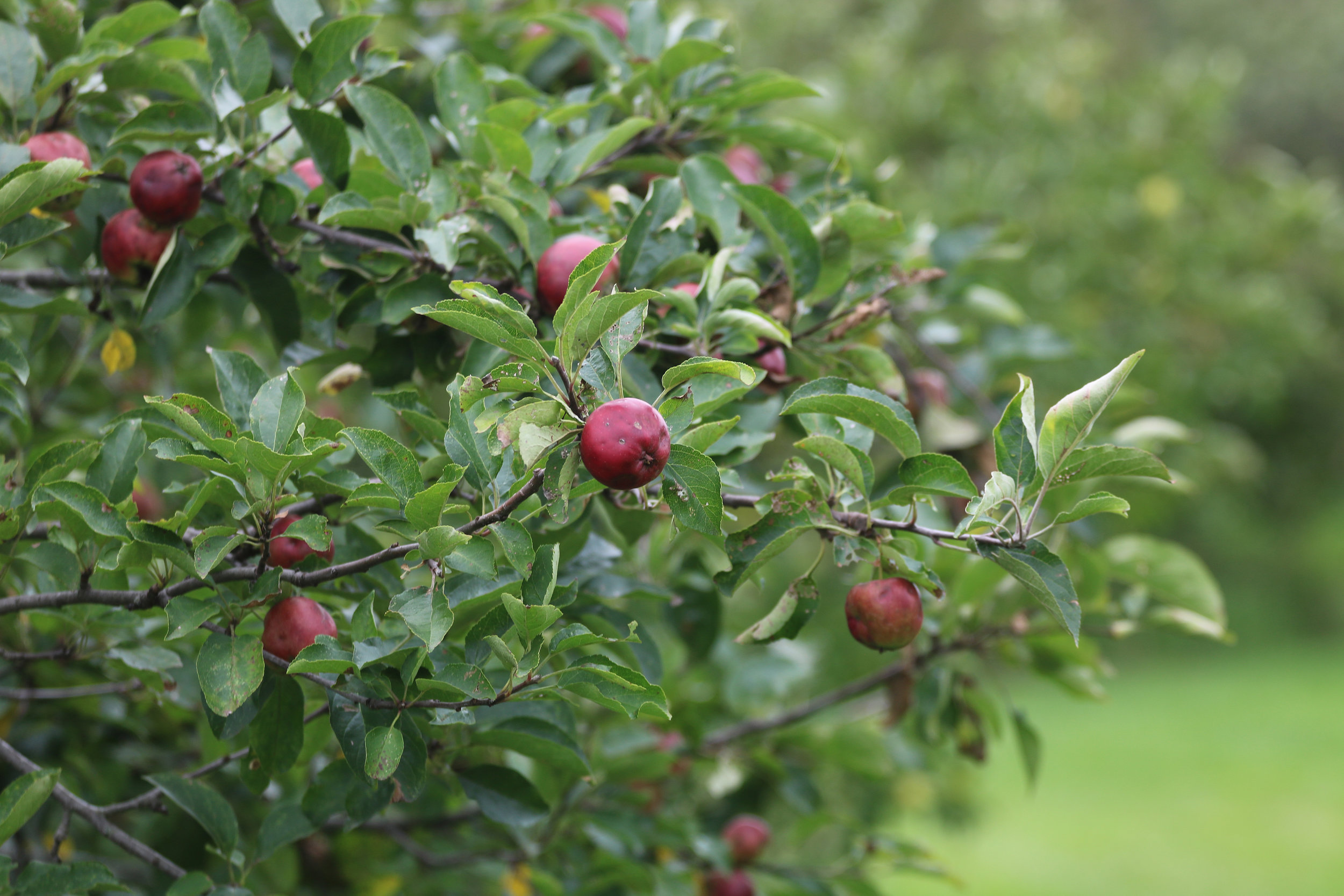Three rare apples get their close-up
/Rare apples ripen in the Seed Savers Exchange Historic Orchard this August.
“Apples from the Seed Savers Exchange orchard are not your typical supermarket denizens,” observed the New York Times in October 2014.
That has been the case since the orchard was planted in 1989, and remains true to this day. And as temperatures begin to drop and schools start to open in towns and cities around the country, some 1,200 apple varieties—some gold, some green, some red but all precious and rare—continue to ripen in the Historic Apple Orchard at Seed Savers Exchange’s Heritage Farm in Decorah, Iowa.
These uncommon yet versatile apple varieties include Gano, Golden Russet, and Virginia Greening, all of which provided sustenance to immigrants and homesteaders during the 19th century (and perhaps even earlier) and all of which grew increasingly rare as advances in refrigeration and transportation helped fuel the decline of apple diversity. And while they may be impossible to find in your local supermarket, all three varieties will soon be ripe for the picking in our Northeast Iowa orchard.
The Gano apple, as depicted in a drawing from the U.S. Department of Agriculture (USDA) Pomological Watercolor Collection.
The beautifully colored Gano apple has light-yellow skin that turns to a stunning purple-red when ripe. Its firm, white flesh is crisp, sweet, and juicy, making it perfect for baking pies and cobbler. Popular in the Blue Ridge Mountains of Virginia in the late 19th and early 20th centuries, the Gano is prized for not only its taste but also its exceptional storage qualities.
The Golden Russet apple, as depicted in a drawing from the U.S. Department of Agriculture (USDA) Pomological Watercolor Collection.
While the Gano thrived in Virginia in the 1800s, the Golden Russet was doing the same up the Atlantic coast. Described in historical documents as “the champagne of old-time cider apples,” this golden bronze-colored variety traveled to this country from England with immigrants in colonial times. Its crisp, sweet, flavorful flesh is extremely versatile, ideal for fresh eating, cider making, and baking. Even better? It stores exceptionally well, hanging on tree limbs until frost and keeping well into spring.
The Virginia Greening apple, as depicted in a drawing from the U.S. Department of Agriculture (USDA) Pomological Watercolor Collection.
As its name suggests, the Virginia Greening likely originated in Virginia, where it is noted in documents that date to the 1700s. The variety bears medium to large fruit with thick and, yes, green skin with an occasional red blush and scattered large, reddish dots. Its yellow, coarse flesh sweetens as the fruit ripens, making it ideal for fresh eating. Like the Gano and the Golden Russet, the Virginia Greening is an excellent keeper that merits planting today just as much as it did in the days of Thomas Jefferson.
You can help Seed Savers Exchange ensure that these three rare varieties and more than 1,200 others being stewarded in our Historic Orchard at Heritage Farm continue to be preserved and shared, in turn ensuring that the diverse beauty and taste of North America’s 19th-century apple heritage are here for all of us today and for generations to come.
This is the third of a four-part series about Seed Savers Exchange’s Historic Orchard. Next up: easy-to-make apple recipes from Minneapolis-based chef and author, Beth Dooley.

















